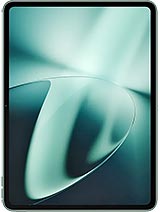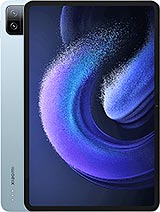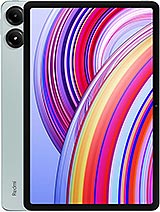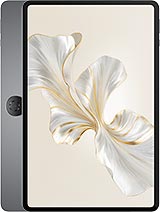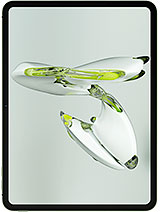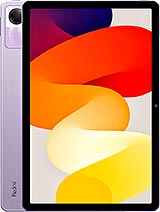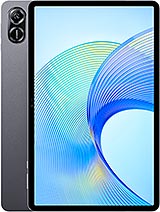Xiaomi Redmi Pad Pro review

HyperOS based on Android 14
The Redmi Pad Pro ships with HyperOS 1.0.4 with Android 14 at its core. The new OS has made its way to many of Xiaomi's older and more recent devices.

Visually, the system isn't much different from MIUI, except for the flatter design with more rounded edges. You can't go back to the classic notification shade style, so you are stuck with the Control Centre, whether you like it or not. Still, the system feels as fluent and snappy as ever.
The new HyperOS introduces many under-the-hood optimizations, resulting in lower latency and faster switching between tasks.
The interface has been modernized with new color palettes, wallpapers, fonts, and subtle curves around UI elements.
HyperOS offers deeper integration with connected devices to your home network and devices signed into your personal Xiaomi account. This isn't new for MIUI users, of course, but HyperOS plays even nicer with other Mi Share-capable devices.
You can now multitask and cast your screen to other devices (tablets and PCs), not just send files. It's not a complete desktop-like experience, though. Samsung still has the upper hand in this regard.
The task manager has been optimized for the big screen, and it shows a lot of app cards at once. A tap and hold on a card reveals options for Split Screen and Floating Window.
You can have up to two floating windows at once and they can be active over two apps that are working in split screen, which means the Pad Pro can display up to 4 apps at the same time.
There is a dedicated Features for Tablets menu in settings. Here you can learn some neat multi-tasking gestures for the floating windows and split screen. Conference Tools is the second option, which is a limited sidebar available when watching videos.

'Stylus and keyboard' menu lets you adjust some settings if you've bought one or more of these optional accessories. There are quite a few options for the keyboard, including handy shortcuts. The Smart Pen is quite useful for notes and drawings on the go, as well as custom screenshots.
Performance and benchmarks
The Redmi Pad Pro runs on the Snapdragon 7s Gen 2 chipset by Qualcomm. It is a chipset built on the 4nm process technology and one that is a bit faster version of the Snapdragon 6 Gen 1. This platform is not as powerful as the 7+ Gen 2 or even the original 7 Gen 1.

The Snapdragon 7s Gen 2 features an octa-core processor with 4x Cortex-A78 @2.4GHz and 4x Cortex-A55 @1.95GHz. There is no Cortex-X prime core here, and the designs are a bit older, dating back to 2020.
The Snapdragon 7s Gen 2 uses Adreno 710 GPU, which premiered on the Snapdragon 6 Gen 1 SoC. It is listed to support FHD+ resolution at 144 Hz.
The Redmi Pad Pro supports Bluetooth 5.2 and Wi-Fi 6.
The tablet is available in three configurations of LPDDR4X RAM + UFS 2.2 storage - 6GB + 128GB, 8GB + 128GB and 8GB + 256GB (ours).
And here go its benchmark scores:
The Redmi Pad Pro provides adequate performance for the mid-range class. It scores very well across all benchmarks and is not that far behind the Xiaomi Pad 6 and its Snapdragon 870.
The thermal throttling tests returned some great retention of performance under prolonged stress, too - 80% for CPU and 99% for GPU!
The Redmi Pad Pro is properly equipped to handle various tasks, including moderately heavy gaming, and that is plenty for a tablet in this price range.
Reader comments
- Anonymous
- 06 Feb 2025
- 7sp
dunno y, but i can, w/ a usb-c to hdmi cable
- Anonymous
- 06 Feb 2025
- 7sp
and install RVX @(ad-less mod of youtube), hdo box; moviebox pro; showbox (free ~netflix) ocean stream (free tv)
- Masih
- 24 Jan 2025
- K8x
But I tried a lot ,I can not connect via hdmi even with HDMI usb-c connector ,,would you tell me how did you connect ?












